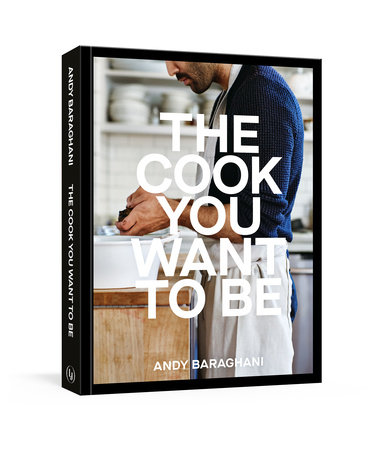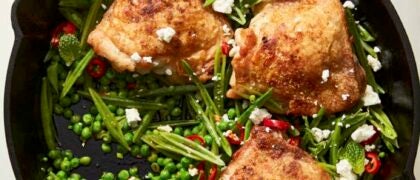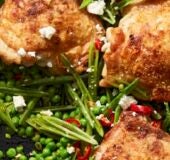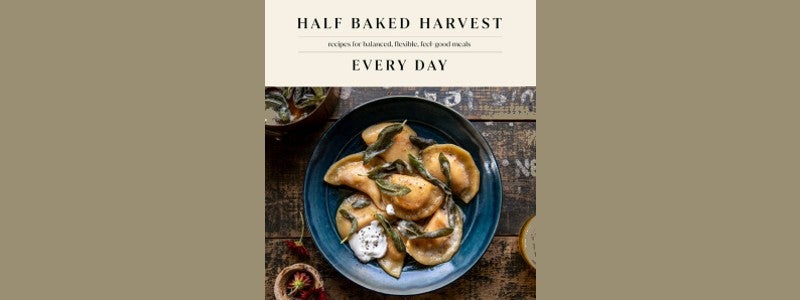IntroductionI really tried to not be a cook. I mean, this little gay Persian boy imagined he was going to be the next Al Pacino. Then, I thought I might be an anthropology professor. After I ghosted that idea, I put in a couple of years in the fashion world but grew tired of the lack of food in that industry.
Just because you love something deeply, I thought, doesn’t mean you should make it your career. I think I feared that if I worked in kitchens, the job would suck the joy out of what was always more than a hobby—more like an obsession—to me.
Thing is, I don’t remember a time when I was not obsessed with food. I remember going on a family trip to Paris when my sister and I were kids and we were each allowed to get one souvenir. She wanted a pair of leathery strappy black stilettos. I wanted a fancy restaurant meal with as many courses as I could get (I got five).
Eventually, I took one restaurant job that led to another. And over the years (15 now!), after putting in the time in and out of restaurants and editorial test kitchens, traveling around the world to (mostly) eat, and still constantly thinking about what I would cook for dinner, I’ve learned a lot that I’m excited to finally share in this book. I learned how to prep two buckets worth of onions lightning fast and to break down a whole lamb. I learned how pork shoulder, generally a tough cut of meat, will fall apart at the touch of a fork after gentle braising over low heat. I learned how to buy spices whole and toast them to get their fullest flavor. I picked up the habit of constantly tasting while I cook. I became an encyclopedia of ingredients. I may have even become slightly better than my mom (!) at making Persian rice. I now know that if the chicory I’m buying is small, tender, and barely bitter, it would be perfect in a salad. But if it’s large and unruly, and so bitter it would make your mouth pucker, it should be browned in butter and gently cooked with a bit of stock. And I know there’s still so much more for me to learn.
All of these experiences have helped me discover my own cooking style—a style that took time to develop. I crave simple, delicious cooking rather than dishes that are overly complicated. Generally, I keep a pretty tight pantry but I do admit to having a large collection of spices. I am picky about rice because it can have major mood swings compared with how pasta behaves. I want my food to look beautiful and to impress—not just your friends but yourself!
I know that my food may be a touch too lemony for some. And that I use what has been called a ridiculous amount of herbs. I prefer vegetables to meat. (But I still love meat!) I have an aversion to many kitchen tools and would rather do most tasks with my hands so I can slow down and relax a bit. I know that if I can’t efficiently make a recipe in my tiny home kitchen, then I won’t develop it.
The recipes that follow were formed by the lessons I’ve learned over time. Some are deeply personal; these are recipes inspired by the Persian food I grew up with, the restaurants I’ve worked at, or dishes I’ve tasted while traveling. I want you to make and love the recipes, and REALLY use this book until it is beautifully turmeric-stained all over. Maybe you’re here to find some dinner inspiration. I got you. But these recipes will also teach you a few tricks, answer questions you may have about a technique, or lead you to discover that maybe you’re not that into parsley (But are you sure??)
There are a few cooking rules I live by and think you should too:
RULE NO. 1: COOK THE UNFAMILIAR If you see an ingredient you’ve never seen before, whether a sheep’s milk cheese, an uncommon citrus, or an olive you’ve never tasted, buy it if it’s in your budget! So much of the joy of cooking is exploring and learning about new ingredients. Don’t ever get too comfortable.
RULE NO. 2: KEEP IT ORGANIZED Look, I wouldn’t give myself a 10 in cleanliness but my score is pretty good. I’m not telling you to do dishes in between cooking, but rather to keep things organized and tidy so you don’t get overwhelmed and forget your next move. I like organized chaos. I find it facilitates the best kind of cooking.
RULE NO. 3: LOSE THE GADGETS Certain tools are essential to becoming a great cook—a sharp knife, a well-seasoned pan, a durable cutting board. I am wary of tools for specific tasks and technology that take the joy out of cooking. You will not find a garlic press in my kitchen and never will I own an Instant Pot.
RULE NO. 4: TRY AGAIN If you screw up a recipe and you’re traumatized from undercooked chicken (if you do, just see page 232 and make chicken broth) and never want to face it again, well, don’t give up so fast. Make it again and learn from what went wrong. Repetition makes you a better, more evolved cook.
RULE NO. 5: WHEN IN DOUBT, REACH FOR SALT OR ACID I’ve heard from so many home cooks that their food doesn’t taste right. Most of the time it’s because the dish is missing salt—the flavors are hiding there, waiting to come out. Or it happens because there’s so much going on in the dish that the flavors are all jumbled up; a hit of acid (citrus or vinegar) will clear things up.
RULE NO. 6: DON’T OVERTHINK This rule could probably be useful in life to most people. I try to be effortless in my cooking. If a piece of fruit is perfectly ripe and doesn’t need much else but some salt and a squeeze of lemon, I go with it.
RULE NO. 7: FLAKY SALT EQUALS MAGIC Flaky salt just makes everything look a touch more fancy.
RULE NO. 8: KEEP IT SHARP I am not one to advocate for spending a small fortune on a chef’s knife. However, I do think it’s essential to keep whatever brand of chef knife you have sharp. Honing it? Sure, a good quick fix. Using a whetstone? You get a gold star. Sending it out to a professional? Do whatever you gotta do.
RULE NO. 9: WATER WORKS It can fix a broken aioli. Along with a handful of aromatics, it can be the base for soup or stew instead of stock. A splash will loosen a thick sauce. It keeps you and your plants alive! Love it, drink it . . . and cook with it.
RULE NO. 10: ALWAYS BE TASTING I taste a dish a minimum of three times before it gets plated. I’ll snack on some of the raw ingredients while I’m doing the prep, again halfway through when the dish is coming together, and then once more when it’s almost finished. I might adjust the salt and fat each time, so whatever I’m cooking tastes right before I serve. Nevertheless, some people are still going to ask you to pass the salt and pepper. Live with it!
My goal is not just for you to love the recipes in this book—I do want that—but to take these nuggets of info and integrate them into your daily cooking routine. I want you to be excited by a spice mix and feel empowered to use it on another ingredient that I might have not suggested. I also want you to apply a technique you learned—whether from me or elsewhere—to other recipes you make. Air-fry my meatballs?! I won’t tell.
If you come to understand the recipes and techniques in this book, you’ll recognize the flavors and textures you’re drawn to and be able to determine what tastes good to you. And between all that cooking and eating, you’ll become the cook you want to be.
Copyright © 2022 by Andy Baraghani. All rights reserved. No part of this excerpt may be reproduced or reprinted without permission in writing from the publisher.










